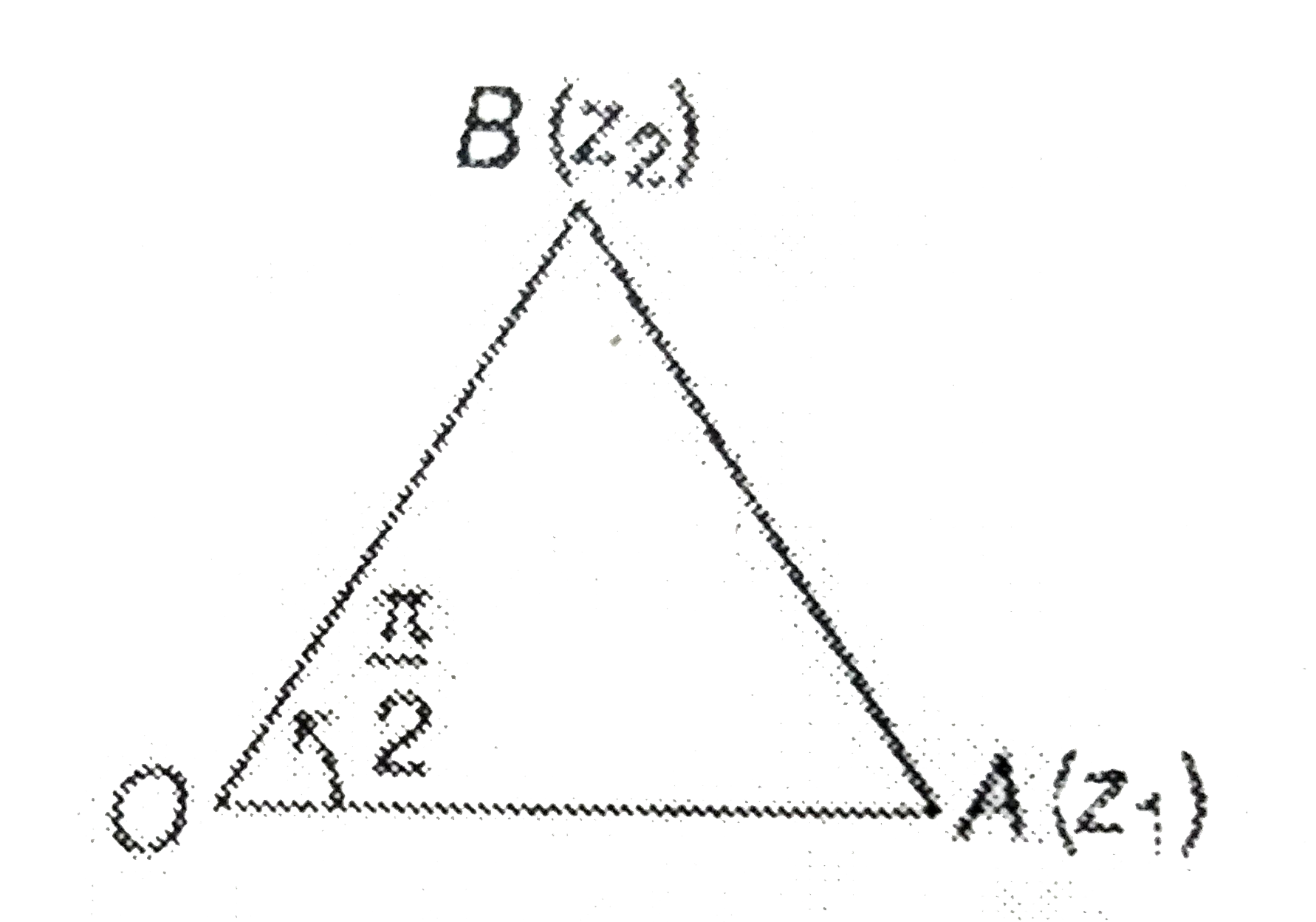Q. Let z1 and z2 be nth roots of unity which subtend a right angle at the origin, then n must be the form .Solution in Tamil
4k+1
4k+2
4k+3
4k
The correct Answer is:D
Since argz1z2=π2
⇒ z1z2=coslπ2+Isinπ2=i
∴z1z2=cosπ2+Isinπ2=i
∴ zn1=(i)n⇒in=1 [∵|z2|=|z1|=1]
⇒n=4k
Alternate Solution
Since arg z2z1=π2
∴z2z1=∣∣∣z2z1∣∣∣eiπ2
⇒z2z1=i [∵|z1|=|z2|=1]
⇒(z2z1)n=in
∴z1 and z2 are nth roots of unity
⇒(z2z1)zn1=zn2=1
⇒in=1
⇒n=4k where k is an integer.

Similar Questions
Let z1 and z2 be the roots of z2+pz+q=0. Then the points represented by z1,z2 the origin form an equilateral triangle if p2=3q.
View SolutionLet z_1 and z_2 be the nth roots of unity which subtend a right angle at the origin then n must be the form
View SolutionLet z_(1) and z_(2) be n^(th ) roots of unity which subtend a right angle at the origin. Then n must be of the form.
View SolutionThe ω≠ 1 is nth root unity, then value of n−1∑k=0∣∣z1+ωkz2∣∣2 is n(|z1|2+|z2|2) b. |z1|2+|z2|2 c. (|z1|+|z2|)2 d. n(|z1|+|z2|)2
View SolutionIf 1,z1,z2,z3,.......,zn−1 be the n, nth roots of unity and ω be a non-real complex cube root of unity, then n−1∏r=1(ω−zr) can be equal to
View SolutionQ. Let z_1 and z_2 be nth roots of unity which subtend a right angle at the origin, then n must be the form .
View SolutionIf 1,z_1,z_2,z_3,.......,z_(n-1) be the n, nth roots of unity and omega be a non-real complex cube root of unity, then prod _(r=1)^(n-1) (omega-z_r) can be equal to
View SolutionIf 1,z_1 ,z_2 ,z_3 ,...,z_(n−1) are nth roots of unity, then show that (1−z_1 )(1−z_2 )...(1−z_(n−1) )=n
View Solution
